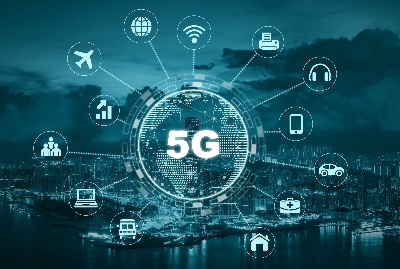
5G technology, the fifth generation of mobile network technology, represents a significant advancement over its predecessor, 4G (LTE). Here’s a comprehensive overview of 5G technology:
1. High Speed: – Data Rates: 5G can provide data rates of up to 10 Gbps, which is substantially faster than 4G, allowing for quick downloads and high-quality streaming.







– **Low Latency**: It offers ultra-low latency, around 1 millisecond, which is crucial for applications requiring real-time feedback, such as autonomous vehicles and remote surgeries.
2. **Increased Capacity**:
– **More Users**: 5G can support significantly more devices per square kilometer compared to 4G (up to 1 million devices per square kilometer). This capability is vital in densely populated areas and in the era of the Internet of Things (IoT).
3. **Improved Reliability**:
– 5G networks are designed to be more reliable, ensuring stable connections for critical applications and services, especially in areas such as healthcare and emergency services.
4. **Enhanced Flexibility**:
– **Network Slicing**: This feature allows operators to create multiple virtual networks within a single physical 5G network, each tailored for specific needs for different users or applications – from consumer mobile broadband to IoT.
5. **Diverse Frequency Bands**:
– **Sub-6 GHz and mmWave**: 5G utilizes a wide range of frequencies, including lower frequencies (sub-6 GHz) which offer broader coverage and higher frequencies (mmWave) which provide high speeds but shorter range. This enables a versatile deployment strategy depending on the requirements.
### Applications of 5G:
1. **Enhanced Mobile Broadband (eMBB)**:
– Provides robust and fast internet services for users, enabling smooth streaming of high-definition videos, augmented reality (AR), and virtual reality (VR).
2. **Massive Machine-Type Communications (mMTC)**:
– Facilitates connectivity for a large number of IoT devices, making it ideal for smart cities, connected vehicles, and environmental monitoring.
3. **Ultra-Reliable Low Latency Communications (URLLC)**:
– Essential for applications where time is critical, such as in autonomous driving, remote surgery, and industrial automation.
### Impact on Industries:
– **Healthcare**: Enables telemedicine and advanced health monitoring.
– **Automotive**: Supports the development of connected and autonomous vehicles.
– **Manufacturing**: Facilitates smart factories with connected machinery and real-time data analytics.
– **Entertainment**: Enhances experiences through cloud gaming and live event streaming with AR/VR.
### Challenges and Considerations:
1. **Infrastructure Investments**: Significant upgrades to the existing network infrastructure are required, including new antennas and base stations, particularly for mmWave coverage.
2. **Coverage and Penetration**: While mmWave offers high speeds, its range is limited, and obstacles can significantly impact connectivity, leading to challenges in coverage, especially in rural areas.
3. **Security Concerns**: As more devices become connected, the potential attack surface increases, raising concerns over data security and privacy.
### Conclusion:
5G technology promises to revolutionize communication and connectivity across various sectors. Its capabilities enable faster speeds, lower latency, and the support of a massive number of connected devices, paving the way for innovations in IoT, smart cities, and more intelligent applications in everyday life. However, the successful implementation of 5G will require overcoming several infrastructural and security challenges.


Leave a Reply